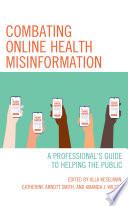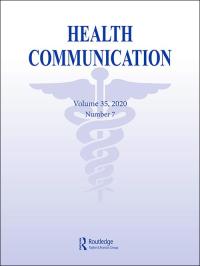Xiaoli Nan

Education
Ph.D., , University of Minnesota
Research Expertise
Health Communication
Persuasion
Dr. Xiaoli Nan is a Distinguished Scholar-Teacher and Professor of Communication Science at the University of Maryland-College Park. She also holds appointments as an Affiliate Professor in the Department of Behavioral and Community Health and as a Faculty Associate of the Joint Institute for Food Safety and Applied Nutrition. Dr. Nan was the Director of the Center for Health and Risk Communication from 2011 to 2025. She was a full member of the Marlene and Stewart Greenebaum Comprehensive Cancer Center's Population Science Program from 2014 to 2024.
Dr. Nan’s research centers on the science of persuasion—examining how people form and change beliefs and attitudes, and how these processes are influenced by persuasive communication. She applies this framework to examine the effects of health communication, misinformation, and emerging media, as well as the role of artificial intelligence in generating and evaluating persuasive messages. Her interdisciplinary work addresses urgent public health issues including cancer prevention, vaccination, pandemics, climate change, and food safety and nutrition. At the University of Maryland, Dr. Nan teaches courses in health communication, persuasion and attitude change, media effects, and quantitative research methods.
Dr. Nan has published extensively in her areas of specialization with over 90 peer-reviewed journal articles. Dr. Nan’s work appears in top communication and interdisciplinary journals including Human Communication Research, Communication Research, Health Communication, Journal of Health Communication, Journalism and Mass Communication Quarterly, Journal of Advertising, Marketing Theory, Health Education, Social Science and Medicine, and Vaccine.
Dr. Nan has been a Principal Investigator or Co-Principal Investigator on grants awarded by the National Institutes of Health (NIH), the National Science Foundation, the Department of Energy’s (DOE) Advanced Research Projects Agency-Energy (ARPA-E), the Food and Drug Administration, the Department of Agriculture, and the Department of Homeland Security, totaling over $10 million. She has served as a PI on four NIH-funded projects on cancer communication strategies. Dr. Nan’s current funded research addresses the role of artificial intelligence in supporting parental decision making about HPV vaccination.
Dr. Nan was a senior editor for the journal Health Communication from 2018 to 2023 and has served on the editorial boards of several academic journals including Human Communication Research, Communication Research, the Journal of Health Communication, and the Journal of Advertising. She was an elected member of the executive committee of the Communication Theory and Methodology Division of AEJMC and served on the research committee of the American Academy of Advertising. Dr. Nan previously served as the Vice-Chair and Chair of the Health Communication Division of the National Communication Association.
Dr. Nan is the recipient of several awards including the Mayhew Derryberry Award (honoring outstanding contributions to health education research theory and recognizing outstanding behavioral scientists) from the Public Health Education and Health Promotion Section of the American Public Health Association (2018), the Lewis Donohew Outstanding Health Communication Scholar Award from the Kentucky Conference on Health Communication (2020), and the Outstanding Health Communication Scholar Award from the Health Communication Division of the National Communication Association (2022).
For more information about Dr. Xiaoli Nan, visit www.xiaolinan.com and read her Graduate Advising Philosophy.
Publications
Understanding the psychological antecedents of COVID-19 vaccine acceptance among Black Americans: implications for vaccine communication
Examination of the psychological antecedents of COVID-19 vaccine acceptance among Black Americans
Author/Lead: Kathryn ThierContributor(s): Yuan Wang, Xiaoli Nan
Non-ARHU Contributor(s): Clement Adebamowo, Shana O. Ntiri, Sandra Crouse Quinn

Guided by the 5C (confidence, complacency, constraints, calculation, and collective responsibility) model of vaccination behavior, we examine the psychological antecedents of COVID-19 vaccine acceptance (i.e. attitudes and intentions toward COVID-19 vaccination) among Black Americans, a group disproportionately affected by the coronavirus pandemic.
Defining Health Misinformation
According to the World Health Organization (WHO), we are entering an age of “infodemics,” with misinformation leading to mistrust in health authorities, increasing risk-taking behaviors, and undermining public health responses.
Author/Lead: Yuan WangContributor(s): Kathryn Thier, Xiaoli Nan

According to the World Health Organization (WHO), we are entering an age of “infodemics,” with misinformation leading to mistrust in health authorities, increasing risk-taking behaviors, and undermining public health responses (WHO 2020). While concerns are rapidly growing about the prevalence and harmful impact of health misinformation (Nan, Wang, and Thier 2021), scholars have not clearly defined health misinformation or its components. Without a clear definition and shared agreement on what constitutes health misinformation, comparisons across studies purportedly about health misinformation will remain challenging, hampering our efforts to understand this phenomenon, assess its effects, and design effective interventions. However, defining misinformation in the first place is exceedingly difficult, partly because the benchmarks we often use to diagnose misinformation (eg, scientific evidence and expert consensus) are sometimes moving targets (Vraga and Bode 2020). In light of the ongoing debate about the nature of misinformation and the urgent need for a clear definition of health misinformation, this chapter aims to critically review current definitions of health misinformation, identify key challenges in defining health misinformation, and finally propose a tentative, unifying definition of health misinformation to guide future research. We conclude by discussing directions for future efforts in refining the definition of health misinformation.
A Scoping Review of Emerging COVID-19 Health Communication Research in Communication and Media Journals
This article reports a scoping review of emerging research on COVID-19 health communication.
Author/Lead: Tong LinContributor(s): Xiaoli Nan

This article reports a scoping review of emerging research on COVID-19 health communication. We reviewed and analyzed 206 articles published in 40 peer-reviewed communication journals between January 2020 to April 2021. Our review identified key study characteristics and overall themes and trends in this rapidly expanding field of research. Our review of health communication scholarship during the early stages of the COVID-19 pandemic suggests that health communication scholars have risen to the challenges and interrogated important issues in COVID-19 communication at the individual, group, organizational, and societal levels. We identified important gaps that warrant future research attention including experimental research that seeks to test the causal effects of communication, studies that evaluate communication interventions in under-served populations, research on mental health challenges imposed by the pandemic, and investigations on the promise of emerging communication technologies for supporting pandemic mitigation efforts.
Public Health Messaging during the COVID-19 Pandemic and Beyond: Lessons from Communication Science
A review of decades of research from the interdisciplinary field of communication science and evidence-based recommendations for COVID-19 public health messaging.
Author/Lead: Xiaoli NanNon-ARHU Contributor(s): Irina A. Iles, Bo Yang, Zexin Ma

The COVID-19 pandemic has made it clear that effective public health messaging is an indispensable component of a robust pandemic response system. In this article, we review decades of research from the interdisciplinary field of communication science and provide evidence-based recommendations for COVID-19 public health messaging. We take a principled approach by systematically examining the communication process, focusing on decisions about what to say in a message (i.e., message content) and how to say it (i.e., message executions), and how these decisions impact message persuasiveness. Following a synthesis of each major line of literature, we discuss how science-based principles of message design can be used in COVID-19 public health messaging. Additionally, we identify emerging challenges for public health messaging during the COVID-19 pandemic and discuss possible remedies. We conclude that communication science offers promising public health messaging strategies for combatting COVID-19 and future pandemics.
Emotion and Virality of Food Safety Risk Communication Messages on Social Media
Study investigates how the emotional tone of food safety risk communication messages predicts message virality on social media.
Author/Lead: Xiaoli NanContributor(s): Yuan Wang, Leah Waks
Non-ARHU Contributor(s): Lead author: Xiaojing Wang Samantha Stanley, Daniel Broniatowski
This study investigates how the emotional tone of food safety risk communication messages predicts message virality on social media. Through a professional Internet content tracking service, we gathered news articles written about the 2018 romaine lettuce recall published online between October 30 and November 29, 2018. We retrieved the number of times each article was shared on Twitter and Pinterest, and the number of engagements (shares, likes, and comments) for each article on Facebook and Reddit. We randomly selected 10% of the articles (n = 377) and characterized the emotional tone of each article using machine learning, including emotional characteristics such as discrete emotions, emotional valence, arousal, and dominance. Conveying negative valence, low arousal, and high dominance, as well as anger and sadness emotions were associated with greater virality of articles on social media. Implications of these findings for risk communication in the age of social media are discussed.
Read More about Emotion and Virality of Food Safety Risk Communication Messages on Social Media
Impact of Self-Affirmation on Responses to Health Warning Messages: Does Consideration of Future Consequences Matter?
An experimental study in which 925 African American smokers were instructed to self-affirm (or not) prior to viewing graphic cigarette warning labels.
Author/Lead: Xiaoli Nan
Self-affirmation theory has inspired numerous studies that have tried to understand the effects of self-affirmation on defensive processing of threatening health messages and subsequent behavior. Despite the overall positive effects of self-affirmation, psychological processes through which self-affirmation exerts such impact remain unclear. We examined Consideration of Future Consequences (CFC) as a potential moderator of the effects of self-affirmation on responses to graphic cigarette warning warnings, in an attempt to shed light on the psychological processes. We conducted an experimental study in which 925 African American smokers were instructed to self-affirm (or not) prior to viewing graphic cigarette warning labels. We found that smokers with stronger present time orientation (PTO) experienced higher defensive responses as measured by anger, perceived message manipulation, and message derogation, after viewing graphic cigarette warning labels; whereas smokers with stronger future time orientation (FTO) reported less message derogation. PTO interacted with self-affirmation in predicting defensive processing measures, such that self-affirmation reduced message derogation at lower levels of PTO and increased message derogation and perceived message manipulation at higher levels of PTO. Self-affirmation also had a conditional indirect effect on smoking intentions and intention to quit smoking through measures of defensive processing. We discuss implications of our study.

